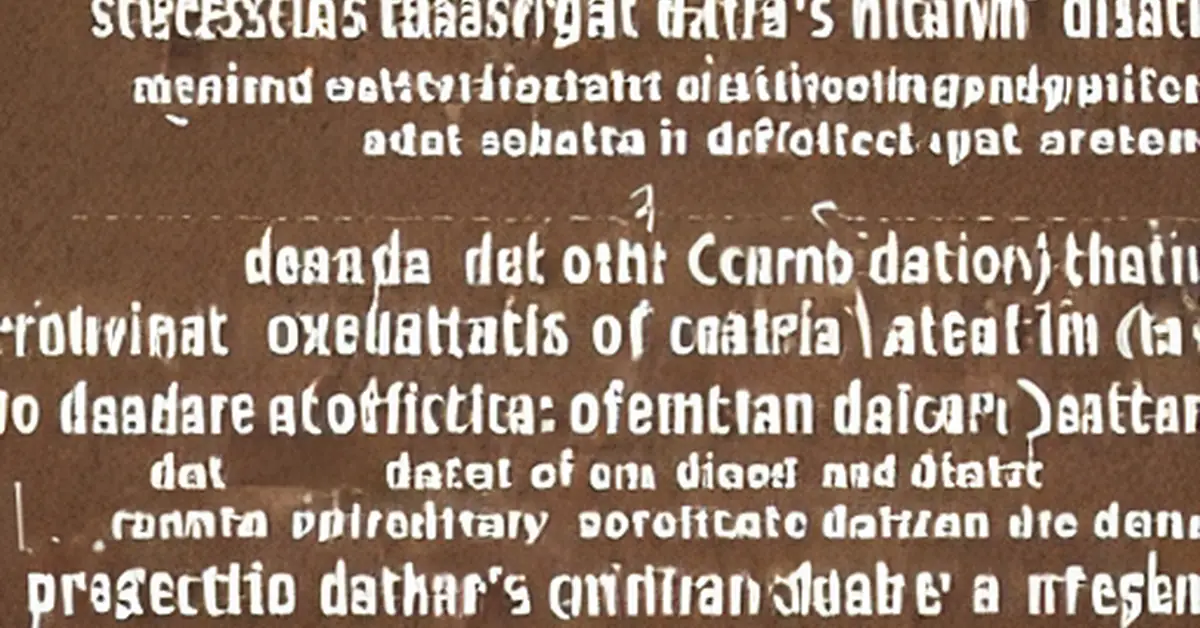Understanding the Mindset of a Data Scientist Through Occam's Razor
In the rapidly evolving field of data science, professionals frequently encounter complex problems demanding effective solutions. Occam's Razor serves as a valuable guiding principle, enhancing a data scientist's approach. This principle, advocating for simplicity in problem-solving, deeply resonates within the data science community. By embracing this mindset, practitioners streamline processes, improve model performance, and derive more meaningful insights. The ability to distill complex datasets into clear, actionable insights is a hallmark of a successful data scientist, and Occam's Razor provides a powerful framework for achieving this goal. This principle isn't just about choosing simpler models; it’s about cultivating a mindset that prioritizes clarity, efficiency, and ultimately, the extraction of meaningful knowledge from data.
What is Occam's Razor?
Occam's Razor, attributed to William of Ockham, posits that among competing hypotheses, the one with the fewest assumptions should be preferred. Simply put: the simplest explanation is usually the best. This can be paraphrased as "entities should not be multiplied beyond necessity" or "keep it simple". This fundamental principle, though centuries old, remains strikingly relevant in the modern context of big data and complex machine learning models. It acts as a crucial filter, helping to sift through the noise and focus on the essential elements that drive understanding.
In data science, this principle reminds us to avoid unnecessary complexity in model development and data analysis. It encourages focusing on essential features and straightforward models that effectively capture underlying patterns without extraneous details. The allure of sophisticated algorithms and intricate models is strong, but often, a simpler approach yields better results, particularly when considering factors like interpretability, computational cost, and the risk of overfitting. The elegance of Occam's Razor lies in its ability to guide decision-making toward clarity and efficiency, while still allowing for the exploration of more complex solutions when justified by the data.
Occam's Razor and the Scientific Method
It's important to note that Occam's Razor is not a law of nature; it's a heuristic principle, a guideline for scientific inquiry. It aligns closely with the core principles of the scientific method, which emphasizes parsimony and the avoidance of unnecessary complications. A good scientific explanation is not only accurate but also elegant and concise. This preference for simplicity isn't about ignoring complexity; it's about understanding which complexities are truly essential and which are artifacts of noise or unnecessary elaboration. A scientist using Occam's Razor strives to identify the simplest explanation that accounts for all available evidence, reserving more complex explanations only when the simpler ones fail.
The Importance of Simplicity in Data Science
A data scientist's mindset should prioritize simplicity for several key reasons:
- Avoiding Overfitting: Simpler models are less prone to overfitting, focusing on essential features and relationships, unlike complex models which may learn noise. Overfitting occurs when a model learns the training data too well, including its inherent noise, resulting in poor generalization to unseen data. Simpler models are less likely to fall into this trap, leading to more robust and reliable predictions.
- Enhanced Interpretability: Simple models are easier to understand and explain, crucial for communicating findings to non-technical stakeholders, fostering better decision-making and trust. The ability to explain a model's decision-making process is paramount, especially in high-stakes applications where understanding the "why" behind a prediction is crucial. Simple models offer this transparency, while complex models can often be "black boxes," hindering effective communication and collaboration.
- Efficiency in Development: Simpler models streamline workflows, reducing development time and computational costs. In the realm of big data, computational efficiency is a critical concern. Complex models can require significantly more processing power and time, making simpler models a more practical and cost-effective choice, especially when dealing with large datasets and tight deadlines.
- Facilitating Troubleshooting: Simpler models allow for quicker identification and resolution of problems during model training or evaluation. Debugging a complex model can be a daunting task. The simplicity of a less intricate model makes it significantly easier to identify and address errors or biases, leading to faster iteration and improved model performance.
- Reduced Bias: Simpler models are less susceptible to incorporating biases present in the data. Complex models, with their numerous parameters and intricate relationships, can inadvertently amplify existing biases, leading to unfair or inaccurate predictions. Simplicity helps mitigate this risk by focusing on the most significant features, reducing the potential for bias amplification.
Applying Occam's Razor in Data Science
Data scientists can incorporate Occam's Razor through these strategies:
- Feature Selection: Focus on selecting features significantly contributing to model performance, using techniques like Recursive Feature Elimination (RFE) or Lasso regularization. Feature selection is a critical step in building effective models. By identifying and retaining only the most relevant features, we reduce dimensionality, improve model interpretability, and prevent overfitting. Techniques like RFE and Lasso provide systematic ways to achieve this, ensuring that only the most impactful features are included in the final model.
- Model Selection: When multiple models yield similar performance, choose the simpler one. For example, prefer linear regression over a complex ensemble method if accuracy is comparable. Often, the marginal improvement in accuracy offered by a more complex model doesn't outweigh the increased complexity in terms of interpretability and computational cost. Choosing the simpler model aligns perfectly with Occam's Razor, prioritizing parsimony without sacrificing essential accuracy.
- Regularization Techniques: Lasso (L1) and Ridge (L2) regularization penalize overly complex models, preventing overfitting by constraining coefficients. Regularization techniques are powerful tools for controlling model complexity and preventing overfitting. By adding a penalty term to the model's objective function, these techniques shrink the magnitude of the model's coefficients, effectively simplifying the model and improving its generalization performance.
- Iterative Refinement: Start with simple models and increase complexity only when necessary, ensuring each added layer serves a clear purpose. A common approach is to begin with a baseline model, such as linear regression, and gradually incorporate more complexity only if justified by a significant improvement in performance. This iterative approach allows for a more controlled and informed increase in model complexity, avoiding unnecessary complications.
- Cross-Validation: Rigorous cross-validation helps ensure that the chosen model generalizes well to unseen data. By evaluating model performance on multiple subsets of the data, cross-validation provides a more reliable estimate of its true performance, helping to avoid the pitfall of overfitting to a specific training set. This is crucial for validating the simplicity of a chosen model; if a simpler model performs comparably to a more complex one through rigorous cross-validation, it reinforces the principle of Occam's Razor.
Case Study: Predicting House Prices
Consider predicting house prices using features like location, size, age, and amenities.
Complex Approach: A complex model might include hundreds of variables (economic indicators, social media sentiment, historical trends, detailed geographic data, school district rankings, crime statistics, even local weather patterns). This approach, while potentially capturing nuances, risks overfitting and becoming computationally expensive, making interpretation difficult. The vast number of variables could obscure the key drivers of house prices, making the model less useful for practical decision-making.
Simpler Approach: Applying Occam's Razor, a simpler model focusing on key factors (location, size, age, and perhaps number of bedrooms and bathrooms) reduces computational overhead and enhances interpretability. This simpler model might not capture every subtle detail, but it would likely be more robust, easier to understand, and provide valuable insights into the primary factors influencing house prices. The trade-off between accuracy and simplicity would need to be carefully considered, but the principle of Occam's Razor suggests that a simpler model, if sufficiently accurate, is preferable to a highly complex one.
Challenges and Considerations
While valuable, Occam's Razor has limitations:
- Not Always Correct: Simplicity doesn't guarantee accuracy; complex models sometimes outperform simpler ones, especially in scenarios with highly non-linear relationships or complex interactions between variables. The principle serves as a guideline, not an absolute rule. There are situations where the underlying reality is inherently complex, and a simpler model would necessarily fail to capture essential nuances.
- Balancing Simplicity with Performance: Finding the right balance between simplicity and predictive power is a crucial aspect of applying Occam's Razor. It's not about blindly choosing the simplest model; it's about finding the simplest model that achieves an acceptable level of performance. This often involves iterative experimentation and careful evaluation of different models.
- Context Matters: The applicability of Occam's Razor varies depending on the problem and dataset. In some contexts, a simpler model might suffice, while in others, a more complex model might be necessary to capture the complexities of the data. The choice depends heavily on the specific problem being addressed, the characteristics of the data, and the desired level of accuracy.
- Defining "Simplicity": The concept of simplicity itself can be subjective and depend on the chosen metrics and the context of the problem. A model might appear simpler in terms of the number of parameters, but it could be more complex in terms of the underlying mathematical operations. A careful consideration of various aspects of simplicity is essential for effective application of Occam's Razor.
Conclusion
The mindset of a data scientist, intertwined with Occam's Razor, emphasizes simplicity for effective problem-solving. Prioritizing straightforward approaches enhances efficiency and minimizes risks associated with overfitting and complexity. Embracing simplicity remains paramount for successful data-driven decision-making, empowering data scientists to deliver actionable insights and navigate challenges more adeptly. By keeping Occam's Razor central, data scientists extract meaningful insights without getting lost in unnecessary complexity. It's a philosophy of mindful model building, ensuring that the pursuit of accuracy is balanced with the need for clarity, interpretability, and efficiency. The successful data scientist isn't just someone who can build complex models, but someone who can effectively harness simplicity to extract valuable knowledge and communicate it effectively. This combination of technical skill and thoughtful approach is essential for driving meaningful impact in the field of data science.




